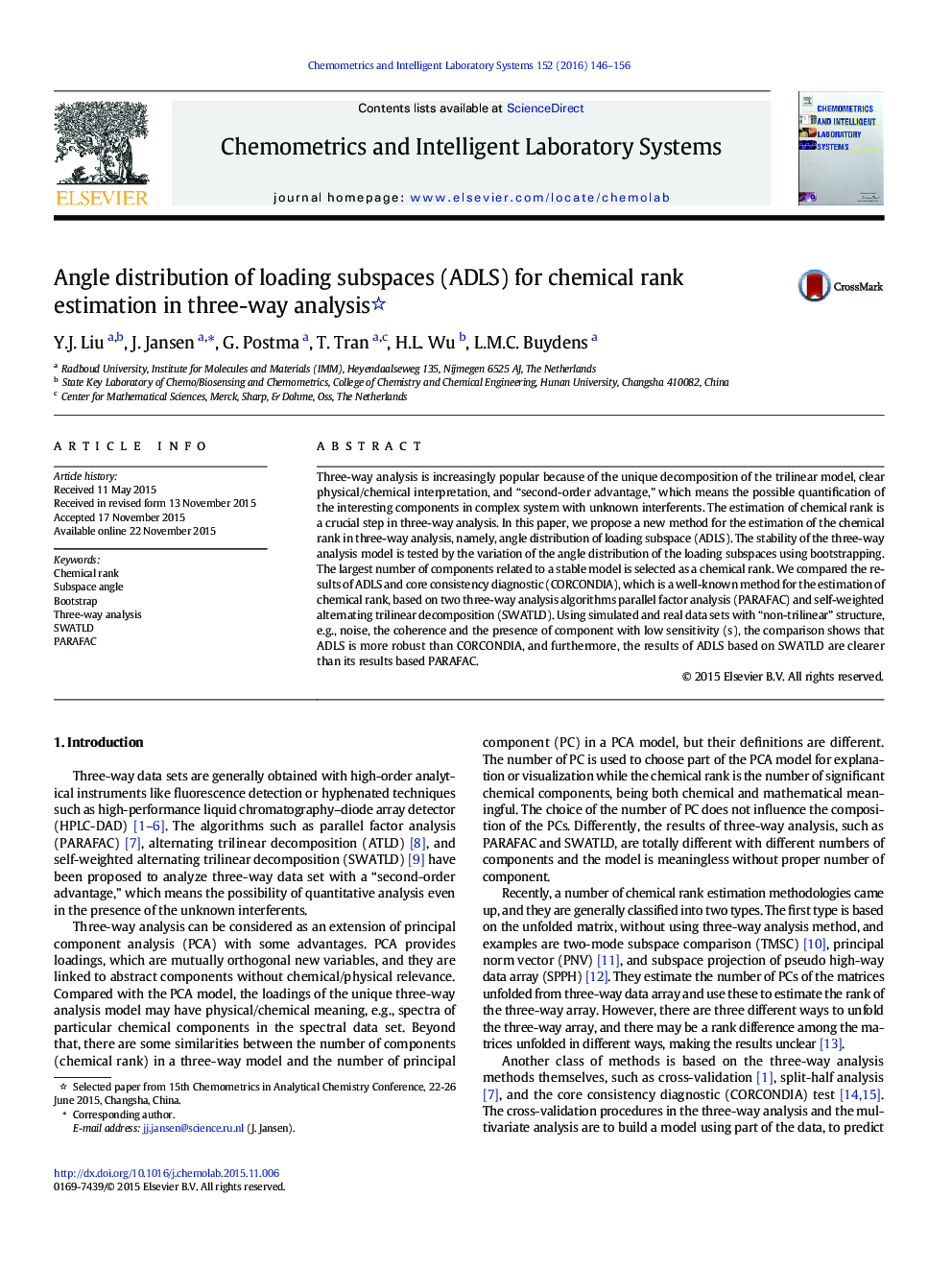| Article ID | Journal | Published Year | Pages | File Type |
|---|---|---|---|---|
| 1179251 | Chemometrics and Intelligent Laboratory Systems | 2016 | 11 Pages |
•We propose a new method named Angle Distribution of Loading Subspaces (ADLS) for the estimation of chemical rank.•ADLS is compared with a well-known method CORCONDIA and the comparision shows that ADLS is more robust.•The method is tested on simulated datasets, constructed with different levels of ‘non-trilinear’ structure.•The method is also tested on real datasets, including flurencence and HPLD-DAD datasets.
Three-way analysis is increasingly popular because of the unique decomposition of the trilinear model, clear physical/chemical interpretation, and “second-order advantage,” which means the possible quantification of the interesting components in complex system with unknown interferents. The estimation of chemical rank is a crucial step in three-way analysis. In this paper, we propose a new method for the estimation of the chemical rank in three-way analysis, namely, angle distribution of loading subspace (ADLS). The stability of the three-way analysis model is tested by the variation of the angle distribution of the loading subspaces using bootstrapping. The largest number of components related to a stable model is selected as a chemical rank. We compared the results of ADLS and core consistency diagnostic (CORCONDIA), which is a well-known method for the estimation of chemical rank, based on two three-way analysis algorithms parallel factor analysis (PARAFAC) and self-weighted alternating trilinear decomposition (SWATLD). Using simulated and real data sets with “non-trilinear” structure, e.g., noise, the coherence and the presence of component with low sensitivity (s), the comparison shows that ADLS is more robust than CORCONDIA, and furthermore, the results of ADLS based on SWATLD are clearer than its results based PARAFAC.
